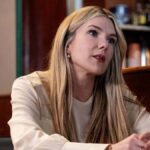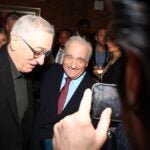For a man so often associated with heavy-hitting directors like Steven Spielberg and Peter Bogdanovich, producer and documentarian Frank Marshall has crafted classics of his own. From thrilling narrative features like “Arachnophobia” to intense documentaries like “The Bee Gees: How Can You Mend a Broken Heart,” Marshall is a storyteller who likes making films about storytellers.
Thus his latest documentary, “Rather,” which premieres Friday at the Tribeca Film Festival, is about a man who shaped the historical stories of the recent past: news anchor Dan Rather. “I like telling stories about ordinary people in extraordinary situations,” Marshall told TheWrap. “It’s so interesting to see how these people who are inspired and then passionate about what they want to do, how they achieve that success.” In this case, Marshall wanted to track Rather’s 60-year career in news and how he’s become just as embraced by the TikTok generation as he was when he did “60 Minutes.”
“I go in completely open-minded,” Marshall said when discussing whether he approached Rather’s story with any preconceived notions. In a way, Marshall and Rather had a lot in common, which only fueled the intrigue. “We shared a lot of stories about being in Texas together,” Marshall said. “He’s from Texas and he got his first break in Texas. I got my first break in Texas on ‘The Last Picture Show.’ What is that first break? And when you are given the ball?”
This interview has been condensed and edited for clarity.
What surprised you most to learn about Dan Rather?
Frank Marshall: His sense of humor. I knew we had Rather-isms but he’s a really funny guy. He’s very straight so he has this dry sense of humor. I love talking with him. And we laughed a lot.
How do you look at news now compared to when Rather was working?
It’s important to look at history, and to look at where all of this news came from. Back then we were on the radio. When Dan started there was only radio news and then we had the three networks. What I love is that Dan has been ever-evolving and changing with the times, and adapting. Now he’s got 3 million followers on Twitter.
How have you adapted as a director since you started in the industry?
It’s knowing who your audience is. It’s looking at how technology can help you as a tool, not as a way to do it. I have embraced the new tools that have come along and certainly on the documentary font, it’s so much easier now to gather footage and cut it together. I really find that the freedom of making a documentary is what I love, and that it’s a journey of discovery. Every day there’s new footage coming in, from archival photographs, or people found a box of 8 millimeter film under their bed. In my day job on a feature, I start with a script. I know every second what I’m doing or what we’re doing on the movie, what we’re shooting.
On a documentary it’s completely the opposite. The script is the final thing you end up with. You’re writing the script all the way along. It’s really much more of an editorial process. Editing is one of my favorite parts of the movie, post-production. I was sitting in the editing room all day. I’m doing the Beach Boys [documentary] right now, so it’s really fun.
Does that mean narrative filmmaking is off the table for you?
Features are really hard [laughs]. I’m fortunate enough to be in a position where I can make the documentaries and I can still produce features, but I don’t know about that. I’m not sure I want to get up at 4 in the morning anymore. I leave that to the youngsters!
You got your start working with Peter Bogdanovich. How do you look at filmmaking today compared to when he was working?
I loved Peter. We started our careers together. I just think that the young filmmakers today should really be sure to look at the old masters, and that’s what Peter did. There’s a way of storytelling, there’s a cinematic language that was established over decades by these wonderful directors and you need to honor that. You need to know the language before you can change it or break it. There are some [filmmakers] that are very respectful. One is Jim Mangold [director of “Indiana Jones and the Dial of Destiny”], he loves movies and he tells the story.
That’s the thing I notice today, that the respect for the art of cinema, the storytelling that we had…I mean if you look at “Paper Moon” or “Last Picture Show,” the story is told in a very deliberate way and that’s why it works. Peter always said to me, “There’s one place to put the camera and that’s where the camera goes.” I think that’s true.
















